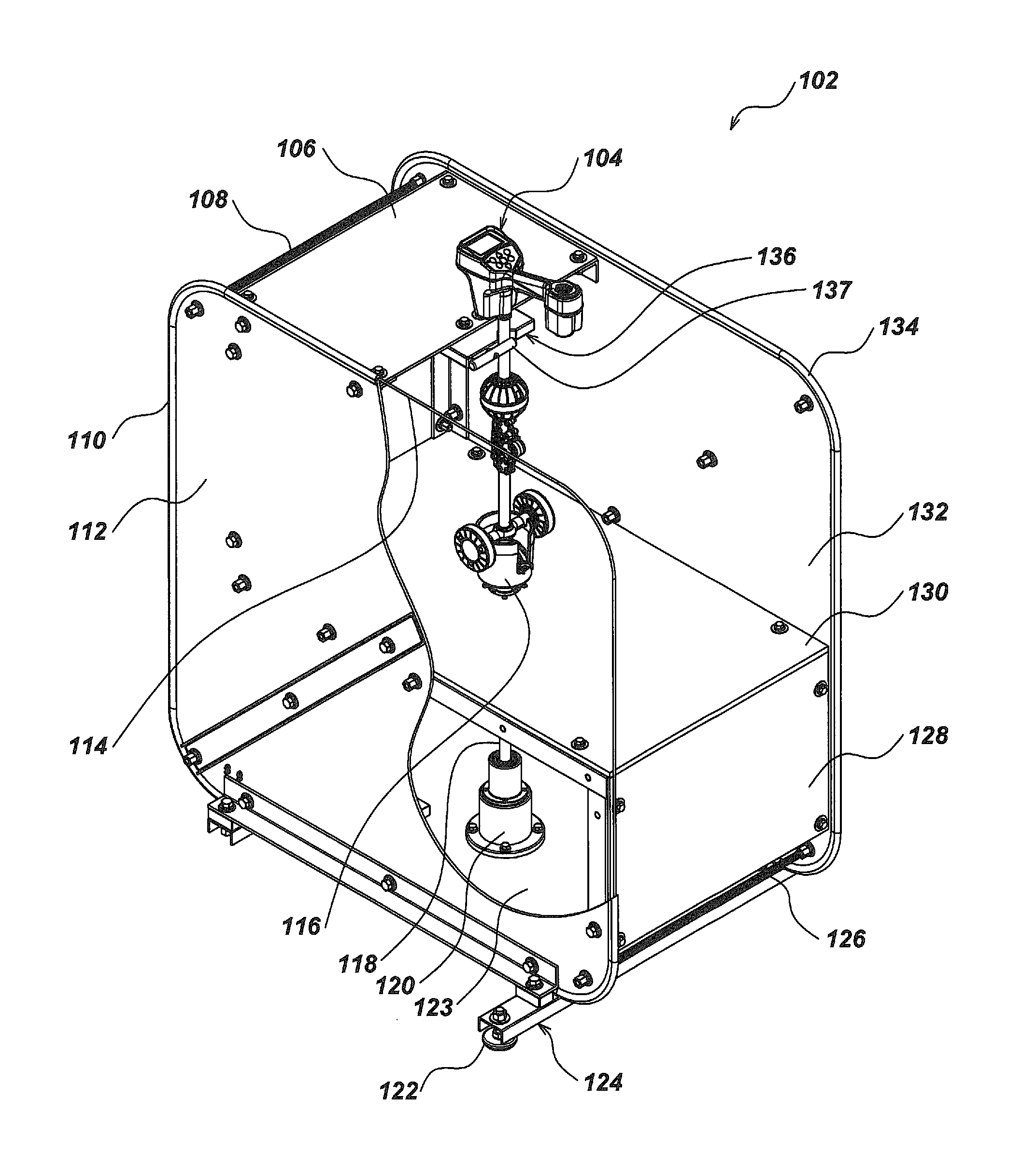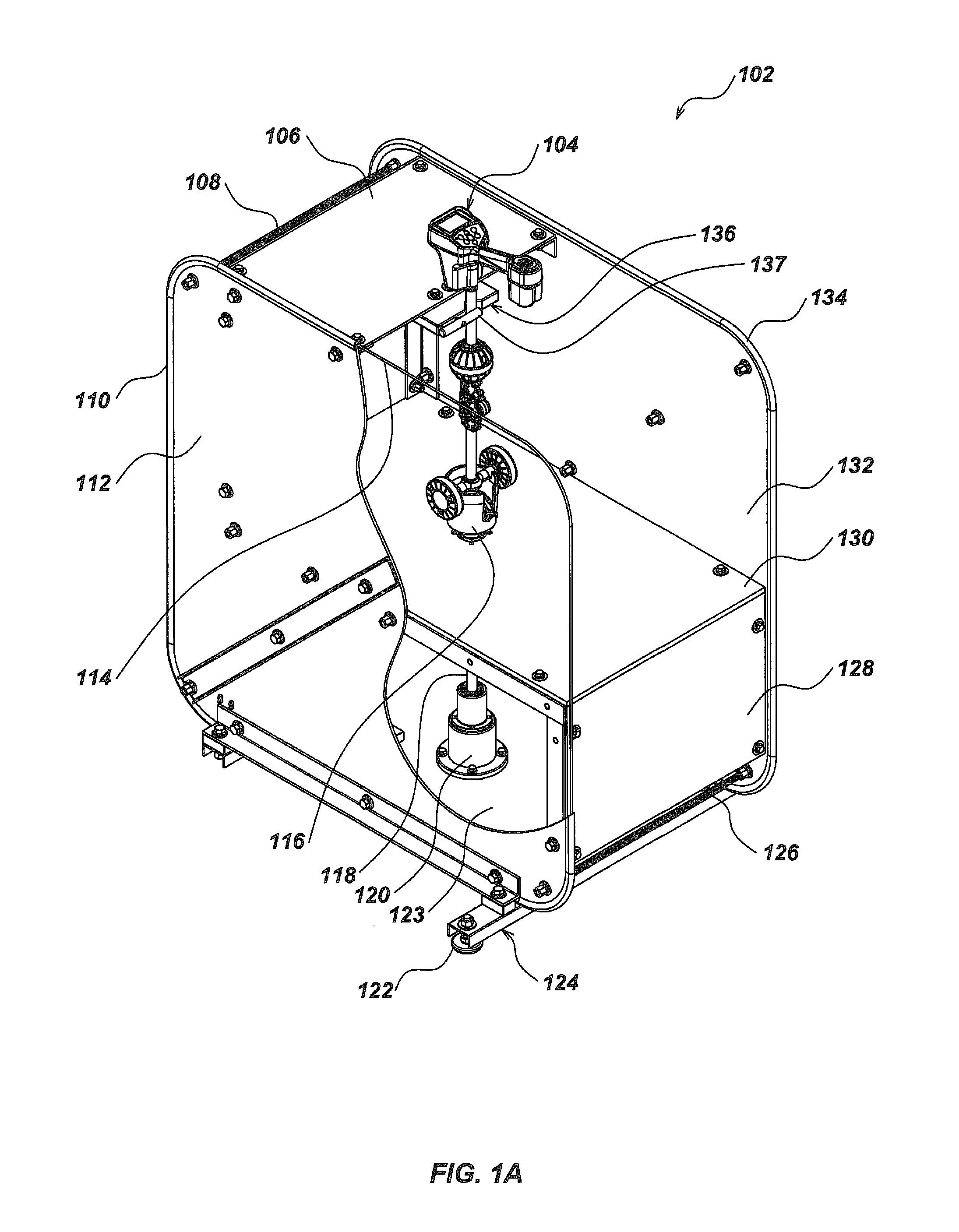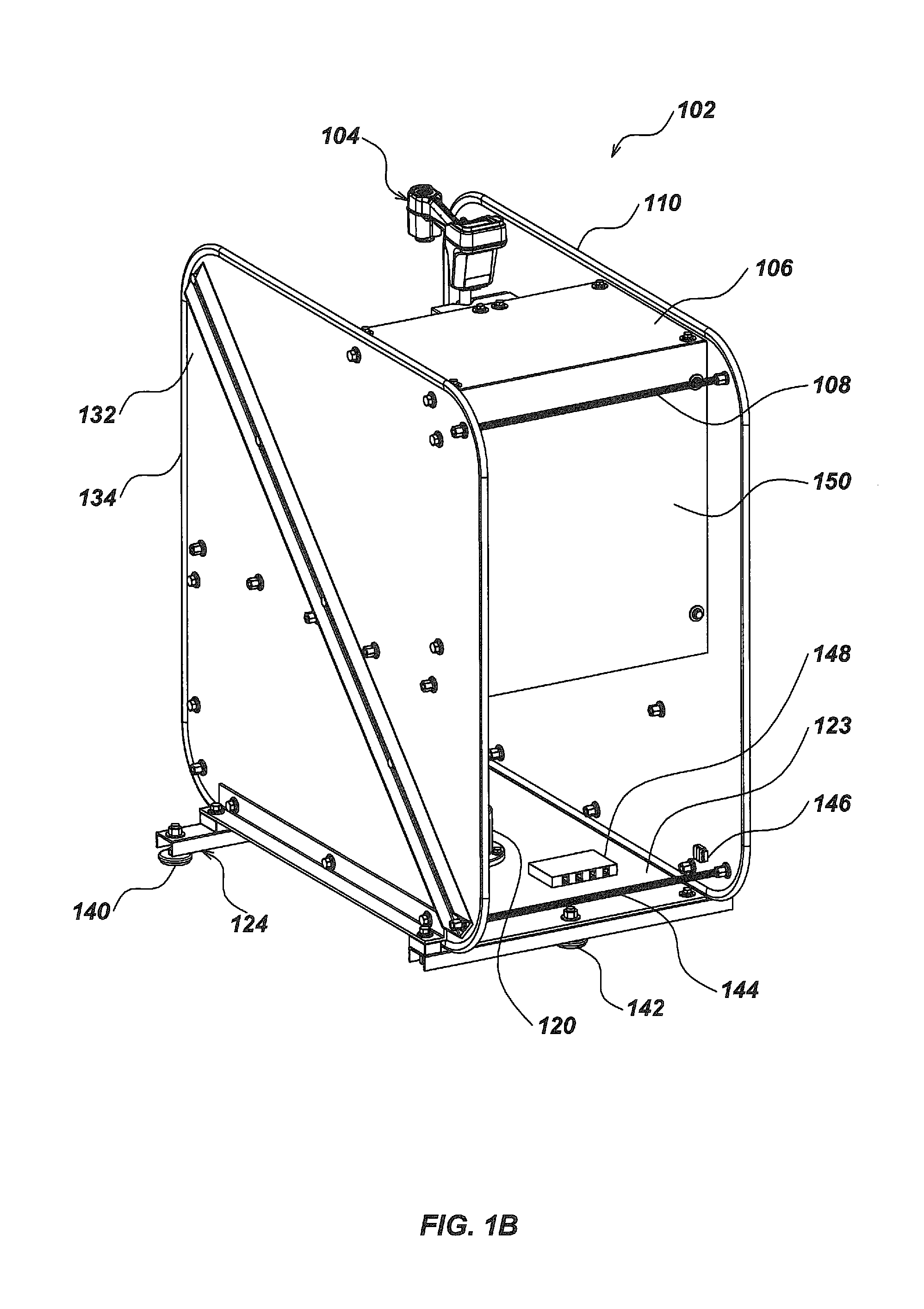Locator and transmitter calibration system
a technology of transmitter and locator, which is applied in the field of underground utility locator receiver and transmitter, can solve the problems of inaccurate creeping into the locating process, and achieve the effect of reducing signal strength and quick field check and calibration of locators
- Summary
- Abstract
- Description
- Claims
- Application Information
AI Technical Summary
Benefits of technology
Problems solved by technology
Method used
Image
Examples
Embodiment Construction
[0020]Referring to FIG. 1A, a calibration system 102 comprises a rigid calibrator frame or assembly including two side panels 112, 132 around each of which are wound the windings (e.g., 114) of the Helmholtz coil (one shown) covered by protective bumpers 110, 134. A single turn of copper tape is used for each winding in this preferred embodiment. The calibrator assembly itself comprises side panels 112, 132, a platform 130, a front lower panel 128, a lower floor 123, and top panel 106. The panels assembled on a frame 124 of joined members with three height-adjustable foot pads for leveling the system. (Only foot pad 122 is shown in this view.) The calibrator assembly is strengthened and given additional rigidity by a number of threaded stiffening rods 108 and 126, which hold opposing sides together. Panels, threaded rods, nuts, and bolts are non-magnetic and electrically insulating fiber reinforced plastics. Suitable fibers are glass and Kevlar. Suitable plastics are rigid epoxies, ...
PUM
 Login to View More
Login to View More Abstract
Description
Claims
Application Information
 Login to View More
Login to View More - R&D
- Intellectual Property
- Life Sciences
- Materials
- Tech Scout
- Unparalleled Data Quality
- Higher Quality Content
- 60% Fewer Hallucinations
Browse by: Latest US Patents, China's latest patents, Technical Efficacy Thesaurus, Application Domain, Technology Topic, Popular Technical Reports.
© 2025 PatSnap. All rights reserved.Legal|Privacy policy|Modern Slavery Act Transparency Statement|Sitemap|About US| Contact US: help@patsnap.com



